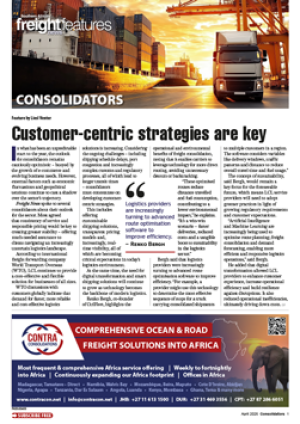South Africa’s mining sector continues to play a critical role in the country’s economy, contributing R800 billion in exports in 2024, making up 45% of total goods exported. However, according to Hugo Pienaar, chief economist of the Minerals Council SA, the industry has the potential to contribute even more – reaching 50–60% of exports – if more minerals were beneficiated or processed locally before export.“Mining matters in South Africa and it needs to be fostered. If the industry can deliver these contributions while under immense pressure, imagine what it could achieve in a climate that allows it to thrive,” said Pienaar.Last year saw divergent global growth patterns, with the US economy growing by 3% in real terms, while Europe struggled, and China posted a 5% GDP increase. Meanwhile, India – now the fastest-growing major economy – expanded by more than 6%, strengthening its position as a key destination for South Africa’s coal exports, particularly as trade shifts away from Europe towards Asian markets.According to Pienaar, despite global uncertainty, the mining sector navigated moderating input costs, with mining inf lation dropping from 9% in 2023 to below 6% in 2024 – still above the 4.5% national inf lation rate but an improvement nonetheless.Commodity prices presented a mixed picture in 2024. “Gold was the standout performer, reaching record highs in nominal dollar terms, while the platinum group metals (PGM) basket price remained f lat after sharp declines in previous years. Coal prices also remained stable, but iron ore experienced a notable decline, ref lecting concerns about China’s economic outlook,” he said.Chrome mining, however, stood out with another record-breaking year, surpassing 19 million tons in the first 11 months of 2024. Exports through Maputo continued to rise, now accounting for over 50% of total chrome exports. Pienaar noted that the performance of Maputo’s port remains critical for key minerals in South Africa.Despite these strong contributions, South African mining production, only showed marginal improvements from 2023’s depressed levels. Pienaar said that while recent electricity supply improvements were promising, the mining sector had yet to respond significantly. “This tells us that beyond energy, other structural constraints continue to hinder mining’s full potential.”Logistics remains a key challenge, with Transnet’s overall tonnage still far below target levels. While coal exports through Richards Bay rose to 52 million tons from 48 million tons, and iron ore shipments showed some stability, overall rail freight remains well below the 250-million-ton target.Transnet itself acknowledges that without private sector participation, reaching this target is unlikely. “The private sector’s response to slot bidding for key rail corridors is a crucial development,” said Pienaar.LV

